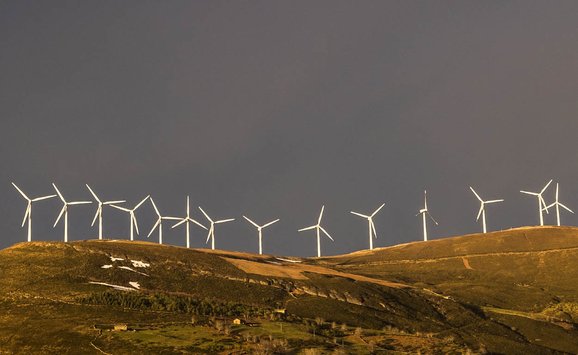Cost will certainly be a factor in any efforts to limit emissions of carbon dioxide. Yet economists disagree when it comes to calculating the economic burden a specific limit will entail. Two different modeling approaches have yielded widely varying estimates. Given that evidence for substantiating these estimates is problematic, they must be viewed cautiously.

Many people have called for the stabilization or reduction of global carbon dioxide (CO2) emissions, among them scientists attending the second World Climate Conference in Geneva, Switzerland, in late 1990. However, efforts to translate such goals into costs, while progressing, remain rudimentary. In a July 1990 draft report, the Inter-governmental Panel on Climate Change (IPCC) acknowledges this need for economic analysis.
How might one tackle the cost question? It makes sense to reckon CO2 mitigation costs by comparing the real output of goods and services with and without CO2 controls, since the value of economic output surrendered most nearly captures the cost to society of a CO2 mitigation strategy. That output is commonly measured in terms of gross domestic product (GDP) or gross national product (GNP). Computing such losses in terms of GDP does not mean that trends or changes in that national-accounts measure are viewed as identical with trends or changes in social welfare. Nonetheless, such a macroeconomic calculation provides a broad indication of the economic burden of CO2 containment.
The process by which restrictions on CO2 emissions inflict a cost on an economy can be complex and hard to predict with precision. If a firm's compliance with CO2 restrictions forces reliance on fuels whose production means higher real costs—that is, requires more employment of labor and investment of capital—the diversion of those factor inputs from other productive activities will lower the total output of the economy. Of course, numerous opportunities exist for attenuating the extent of a drop in GDP. For example, constraints on the use of fuels containing carbon might instigate increased energy conservation, which may have a lesser economic penalty than a switch to a costlier alternative fuel. In principle, most modeling efforts allow for such tradeoffs in calculating the net cost to the economy of CO2 abatement.
Needless to say, attention must be paid to the means and timing by which a specific reduction in global CO2 emissions is to be achieved. At present there is no straightforward cost estimate for, say, a 20 percent reduction below the recently prevailing level of carbon dioxide emissions. The means employed (for example, taxes on carbon emissions or limits on emissions), the order in which different countries are supposed to comply (should the United States comply before China, or vice versa?), and the pace at which a policy is to be phased in (gradually or precipitously) will all affect such an estimate. Ideally, some sort of global least-cost calculation would emerge from analyses that account for these disparate factors. But it is important to recognize that models simulating the ramifications of a CO2 abatement policy are stylized and highly imperfect representations of the complexity that characterizes the real world. The more such general equilibrium models attempt to track the pathways by which CO2-limiting actions work their way through national and multinational economies—transmitting disruptive effects as well as inducing responses that cushion impacts—the more our need to appreciate the schematic nature of the modeling effort.
Picture some of the more obvious consequences of a country's decision to unilaterally tax the carbon content in the combustion of fuels. Demand for domestic coal would fall as consumers conserved or shifted to other fuels—the latter course possibly having a negative impact on industrial competitiveness in foreign trade. The demand for and subsequent rise in the price of low-carbon fuels might enhance both technological development and the potential of nonconventional energy sources (hitherto priced out of contention) to penetrate the market. In the meantime, the decline in the domestic coal market would promote the attractiveness of coal exports, complicating both the predictability of international economic adjustments and the extent to which the desired curtailment of CO2 emissions might be undermined by the shipment of coal overseas. This example of the task that modelers face in trying to trace the net economic (and environmental) repercussions of CO2 constraints is not intended to dismiss the utility of such analyses; there are few alternatives to relying on the insights they provide. At the same time, it is important to keep in mind any number of limitations inherent in such an effort—notably, weaknesses in data, uncertain behavioral phenomena, and, above all, the poor predictability of underlying economic trends many decades into the future.
Average Annual Percentage Rate of Change in Factors that Contributed to Global Growth in Carbon Dioxide Emissions, 1973–1987


Models simulating the impacts of a CO2 abatement policy imperfectly reflect real world complexities; yet there are few alternatives to relying on the insights they provide.

Factors determining CO2 emissions
A reduction or increase in the level of carbon dioxide emissions from the energy sector can conveniently be explained in terms of four key factors: population, GDP per capita, the energy/GDP ratio, and the CO2/energy ratio. Other things being equal, slower population growth means less CO2 released, while higher GDP per capita signifies more CO2 emitted. The energy/GDP ratio is a measure of an economy's intensity of energy use, reflecting the structural, technological, and energy-use characteristics of a society. A falling energy/GDP ratio—brought about by improvements in the efficiency of electricity generation or automotive fuel economy, for instance—means less CO2 emitted. The CO2/energy ratio reflects the overall effect of a mix of energy sources and forms with varying carbon characteristics. Clearly, an important element in determining the costs of mitigating carbon dioxide emissions is the ease or difficulty of altering that mix away from carbon-intensive sources of energy such as coal, toward sources lean in or devoid of carbon, such as natural gas and solar and nuclear power. All the above factors must enter into analysts' attempts to probe the costs, as well as the technical feasibility, of CO2 mitigation.
For historical perspective, it is worth noting the weight exerted by each of these factors in the growth of CO2 emissions worldwide during the past several decades. Dr. Yoshiki Ogawa of the Japan Institute of Energy Economics has quantified the average annual percentage change in each during the years 1973 to 1987 (see table, p. 7). According to his calculations, downward trends in both the intensity of energy use and the carbon content of fuels were insufficient to overcome the effect of upward trends in population and per capita income on the growth of global CO2 emissions. This suggests that, even with some future deceleration of population increase, if growth of CO2 emissions is to be significantly slowed (let alone reduced) and economic growth (especially in the less developed countries) is to continue at an adequate rate, a heavy burden would be placed on declining intensity of energy use and increasing recourse to noncarbon fuels. Thus, almost by definition, studies of the cost of mitigating carbon dioxide emissions focus, explicitly or implicitly, on one or both of these two factors as critical to the success of any CO2 abatement effort.

This U.S. Department of Energy building in Illinois Is designed to maximize energy efficiency. A modeling approach that focuses on such specific energy conservation opportunities reveals lower estimates of CO2 mitigation costs than an approach based on aggregate economic modeling
Two kinds of economic modeling
Analyses of carbon dioxide mitigation strategies take one of two broad approaches: the "top-down" application of aggregate economic models and the "bottom-up" application of CO2 abatement opportunities associated with specific energy uses in different sectors of the economy. Typically, the top-down approach involves the construction of stylized macroeconomic-technological models linking energy and the economy. In these models productive resources are reduced to broad classes of inputs (energy, capital, and labor), and, for time horizons many decades into the future, the values assigned to parameters and variables abound in uncertainty. This uncertainty spans key factors such as economic growth and its technological underpinnings; demographics; behavioral change that affects energy use; and the cost of energy resources and their substitutability with other resources.
The bottom-up approach stands in contrast to aggregate economic modeling by singling out the role of potential energy conservation. Analysis focuses on energy-using consumption and production activities, ranging from residential lighting to automotive transport to co-generation of steam and electric power. Using the evidence gleaned at this level of disaggregation, analysts try to scale up their findings to ascertain the implications for the economy as a whole.
Although the point is frequently ignored or misunderstood, looking at CO2 mitigation strategies from the perspective of energy conservation is not necessarily a logical alternative to, and need not be inconsistent with, economy-wide modeling. Rather, the bottom-up approach serves simply to emphasize one important component of the problem. Critics may contend that the top-down treatment of conservation is inadequate because of its aggregative character. But in principle enhanced energy efficiency is explicitly and necessarily treated in any analysis that has to incorporate the effects of price, income, and technological developments on both the energy demand and supply sides.

"Top-down" modeling shows that CO2 mitigation exacts a significant price; "bottom-up" modeling reveals zero to small economic losses.

Some cost estimates
Nevertheless, the importance of the contrast in these approaches becomes apparent when one considers the sharply differing cost estimates for CO2 mitigation that they yield. Alan Manne of Stanford University and Richard Richels of the Electric Power Research Institute have used the top-down approach to estimate the cost of limiting global CO2 emissions to about 18 percent above the present level throughout most of the twenty-first century. (The present level is estimated to be about 6 billion metric tons annually, excluding the effects of deforestation.) They have calculated that such a limit would necessitate a carbon tax rising to approximately $250 per ton of carbon emissions. (Based on the respective carbon content of coal and oil, the carbon tax on coal would rise to roughly $150 per ton and on oil to $30 per barrel.) That limit could also exact economic penalties ranging from 3 to 10 percent of the gross domestic product in various countries around the world. Using the top-down approach (based on a number of underlying studies), William Nordhaus of Yale University arrived at comparable findings.
The Congressional Budget Office also used the top-down approach to arrive at near- and very-long-term cost estimates for the United States alone. Its study found that a tax of $10 per ton of carbon emissions, rising to $100 per ton during the years 1991 to 2000, would stabilize the level of U.S. carbon dioxide emissions at recent levels by the year 2000 and reduce them to more than 20 percent below these levels by 2100. Throughout the next century, annual levels of U.S. economic activity would hover at about 1 percent below the baseline path otherwise assumed to prevail. Since under that baseline path CO2 emissions would grow far less rapidly in the United States than in other parts of the world, U.S. economic losses for a specified percentage reduction in CO2 emissions from prevailing levels would be much more modest than, say, in the Soviet Union, China, and the less developed countries.
For the world as a whole, top-down modeling work clearly shows that CO2 mitigation exacts a significant price. In sharp contrast, an analysis of CO2 mitigation costs based on the bottom-up approach reveals that zero to small economic losses—depending on the level of mitigation specified—would be incurred. William Chandler of Pacific Northwest Laboratories directed eight country case studies that focus on possible energy efficiency improvements during the years 1985 to 2025. He found that a potential exists for the Soviet Union, several countries in eastern Europe, and key member countries of the Organization for Economic Cooperation and Development to substantially reduce absolute emissions of carbon dioxide with virtually no forfeiture of economic output. Even if anecdotal and selective, Chandler's examples of economic waste in energy use are telling: gross inefficiency in Poland's combined heat-and-power systems; leakages in the Soviet Union's gas distribution network; and instances of "sub-optimal" energy use in U.S. buildings and transport. Summing up the eight case studies, Chandler suggests that stabilization of emissions would entail zero economic costs through 2005 and that a 20 percent cut in the present level of carbon dioxide emissions would inflict losses no higher than 0.1 to 0.5 percent of the gross domestic product in the countries studied.
How costly is costly?
What is one to make of modeling approaches that yield such different estimates of CO2 mitigation costs? Evidence substantiating either the high cost estimates (resulting from the top-down approach) or the low ones (resulting from the bottom-up approach) remains far from satisfactory. In the case of the top-down approach, technological advances—facilitated by aggressive research and development and the elimination of market frictions (such as the failure to price electricity at replacement cost)—might make substitutes for carbon-based fuels much less costly (and thus less burdensome on economies) than Mame and Richels hypothesize. For example, their estimate of the cost at which a non-carbon supply source, such as solar energy, would enter energy markets is a very high $20 per million British thermal units (Btus), an order of magnitude higher than prevailing fossil fuel costs. In addition, Manne and Richels allow for a rather low rate of autonomous technological improvement—that is, the inherent and persistent tendency toward enhanced energy efficiency independent of improvement induced by relative price change.
In the case of the bottom-up approach, do Chandler's examples of the potential for conservation truly meet an economic feasibility test such that trends in the economic performance of individual nations can remain undisturbed for many decades? In other words, how much energy can be saved and to what level can CO2 emissions be reduced at zero cost? The perennial question of what combination of market imperfections and public policy deficiencies significantly inhibit conservation initiatives takes on renewed importance as global climate change reinforces concern about other problems associated with energy use, such as localized air pollution, vulnerability to disruptions in the world oil market, and preservation of ecologically sensitive land and marine resources.

Both the high and low estimates of CO2 mitigation costs are based on evidence that is far from satisfactory.


These photovoltaic arrays in Carrisa Plains, California, transform the sun's power into electricity. With technological advances, substitution of carbon-based fuels by solar energy might be less costly than some estimates suggest
It remains to pose the question: How costly is costly? A country able to achieve a targeted level of CO2 emissions by the end of the twenty-first century under conditions in which its GDP is never more than, say, 3 percent below the trend line will show an average annual percentage growth rate in GDP indistinguishable from that trend line if that rate is not calculated beyond one decimal point. If, in that sense, the cost seems inconsequential, those pointing to the cumulative volume of goods and services forgone over 100 years will not be as cavalierly dismissive. In a world of competing demands for scarce resources, there must be a clear justification for committing "just" 3 percent of a country's GDP to any one cause. It takes only thirty-three causes, each claiming 3 percent of the GDP, before 99 percent of the economic pie has been spoken for!
In that light, society's willingness to bear CO2 mitigation costs must at some point be conditioned both by alternative response strategies—for example, adaptation—and, more elusively, by perceptions of the harm that an unfettered increase in global warming would induce. Given the potentially large costs societies will bear for serious constraints on CO2 emissions, mitigation strategies must have some claim to cost-effectiveness if they are to have any chance of being accepted. They must also make provisions for an equitable sharing among nations of the burden of mitigation costs.

Joel Darmstadter is a senior fellow in the Energy and Natural Resources Division at RFF.
A version of this article appeared in print in the May 1991 issue of Resources magazine.





